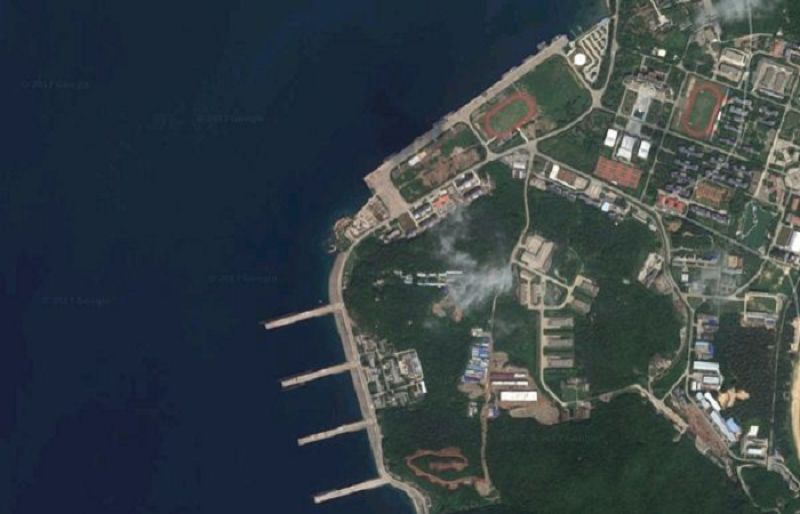China may be planning overseas naval bases in Asia and Africa, say analysts - SUCH TV
 [ad_1]
[ad_1]

Beijing believed to be aiming to rival US’s global maritime power and defeat western sanctions, report concludes.
China’s military may be planning to build a host of overseas naval bases, as it hopes to protect shipping routes and strengthen its ability to resist sanctions from the US and its allies, analysis has found.
Hambantota in Sri Lanka, Bata in Equatorial Guinea and Gwadar in Pakistan are the three most likely locations for a Chinese naval base to be established in the next two to five years, according to an analysis by AidData, a US-based research institute, published on Wednesday.
The report’s authors considered the amount of development financing issued by Chinese state-owned banks to port projects, the strategic value of existing infrastructure and strong relationships with host country governments, among other factors, to come up with a list of eight leading options for future Chinese naval bases.
China’s People’s Liberation Army Navy (PLAN) currently only has one overseas military base in Djibouti, on the coast of the Horn of Africa.
But as the rivalry between the US and China heats up, Beijing is catching up with Washington’s overseas maritime strength. Unlike the US, China is not party to international defence alliances – its only formal defence treaty is with North Korea. That makes developing overseas naval bases a priority for China’s military development, argue the AidData researchers.
PLAN’s future ambitions may be closely aligned with China’s belt and road initiative. Four of the eight bases shortlisted by AidData are in Africa. Although China’s most pressing maritime ambitions are in the South China Sea and the Taiwan strait the report’s authors note that those operations could be conducted “entirely from the Chinese mainland and home naval bases”. PLAN bases farther afield would help China to preserve shipping routes, especially in the event of western sanctions, and gather intelligence.
Hambantota port in Sri Lanka is considered to be the most likely location for a PLAN base in the near future, according to AidData. The port, which opened in 2010, was financed by a $306.7m loan from China Exim Bank, a state-owned development bank. AidData says that Beijing exercises “direct control over the facility”.
In 2017, a Chinese firm took over control of the port of a 99-year lease, after the Sri Lankan government fell into difficulty servicing its overseas debts. Hambantota is often cited as an example of China’s “debt trap diplomacy”, but economists have argued the saga is more likely to reflect the Sri Lankan government’s instability rather than a concerted Chinese strategy to take control of an overseas base.
“It is a time-honoured truth that the flag often follows trade,” said Blake Herzinger, a research fellow at the University of Sydney’s United States Studies Centre. “While these port investments are unlikely, in most cases, to become formal bases for the PLAN, it is useful for the [Chinese Communist party] to have friendly locations where the PLAN can seek resupply and repair around the world.”
On Tuesday, the US satellite imagery company BlackSky released updated images of the Ream naval base in Cambodia, where the US government suspects Beijing is building a facility to boost its naval presence in the region. The base is being built with Chinese assistance, but Beijing and the Cambodian government deny that a People’s Liberation Army presence will be allowed there. Defence analysts say a military base at Ream would give significant strategic benefits to China, including access to the Gulf of Thailand.
The images show that a pier at the base is nearing completion, and is strikingly similar to the one at China’s Djibouti base. The pier is long enough to dock warships including aircraft carriers, BlackSky told an international newspaper, bolstering a previous assessment that the facility was being prepared for deepwater vessels. “It is worth noting the Cambodian navy operates only smaller patrol boats and is unlikely to need deep channels for its own uses,” AidData said in its report, which added that while other sites had a “headstart”, the Ream base was likely to be a future Chinese naval port.
Comments
Post a Comment